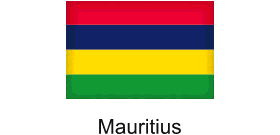 UN Satellites Reveal 30 Kilometers Of Mauritius Shoreline ‘Heavily Affected’ by Oil Spill
UN Satellites Reveal 30 Kilometers Of Mauritius Shoreline ‘Heavily Affected’ by Oil Spill
A more complete picture of the extent of the Wakashio devastation started to reveal itself by Thursday, with several key reports being released. UN satellites have now revealed 30 kilometers of shoreline along the coast of Mauritius have been heavily affected by the heavier engine fuel oil leaked from the Wakashio.
Contaminated algae has been identified in multiple locations along the East Coast downwind of the wreck (in a Northerly direction), while mangroves affectedwith the heavy fuel oil have been identified 16 kilometers North of the wreck in Grand Rivere Sud-Est, close to Ile aux Cerfs. Pollution in this location was first revealed by private space operators nine days ago. High resolution Synthetic Aperture Radar satellite analysis from Iceyeand Ursa Space Systems, on 11 August, just five days after the oil first started leaking, showed the full extent of the spill around the tourism island of Ile aux Cerfs and large industrial aquaculture fish farms on the East Coast.
The extent of the spill could not be fully seen by the naked eye by the coast or from optical satellite imagery. Hence there is a revolution of new satellites with new capabilities that can detect all forms of pollution. The SAR satellites also have much higher sensitivity and can pick up all the reflective surface pollution caused by oil slick, that relies on advanced machine learning analysis, which makes them able to detect much more sensitive incidents of the spill - as can be see in Blue Bay Marine Park (and validated by photographs from the scene showing the slight slick film there). The lower sensitivity UN imagery came out on 19 August, eight days later, confirm Iceye’s initial findings about how rapidly the oil spill had been spreading. Neither does the UN satellites possess the same sensitivity as the more advanced Iceye constellation.
This shows two benefits of private sector satellites: more sensitive and lower latency (i.e., the time it takes to receive the satellites imagery back and be used).
This shows the value of having a low lag time in satellites data (shorter time between a satellite taking an image and it coming to Earth via a downlink station). By having near instantaneous feeds of a situation - as Iceye and Ursa Space Systems had been providing exclusively for Forbes for coverage of the Wakashio incident - important operational decisions can be taken to minimize risk in almost real time, such as where to deploy oil protection booms, how to start preparing other regions of the country.
It was the combination of Iceye’s SAR analysis on 11 August that first revealed Wakashio’soil was leaking into Blue Bay Marine Park, and this then resulted in the subsequent redeployment of the oil protection booms around Blue Bay (as shown by satellite imagery before and after the information was released).
